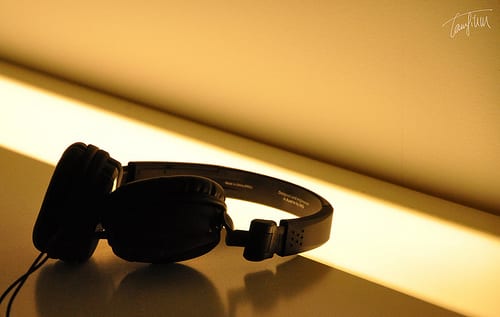 Earlier this month, Brooklyn guitar teacher Mike B. shared his tips on how to transcribe music – did you try them out? If you’re still struggling, here’s another approach from fellow Brooklyn teacher Martin N. to think about…
Earlier this month, Brooklyn guitar teacher Mike B. shared his tips on how to transcribe music – did you try them out? If you’re still struggling, here’s another approach from fellow Brooklyn teacher Martin N. to think about…
Since music is what you hear, developing your ear is one of the most important things for a musician to work on. While sight-reading is an essential skill, learning music by ear can be an extremely valuable exercise.
When you play music with other people, the more you can hear and understand the better the music will be and the more comfortable you’ll feel. Learning songs by ear can be tough and sometimes pulling up a tab seems like the faster and better way to go. But stick with it, and you can train yourself correctly.
So where do you start? Here’s one technique: I like to stick to the mantra, if you can sing it, you can play it. Not all of us, including myself, are great singers. Don’t worry about how your voice sounds, though – just try singing! Start by listening to the song or part of song you want to learn. Get to the point where you can sing along with the recording (even if it’s a bass line or guitar part). After you can sing it, go to your instrument and see if you can find that first note. Use your singing as a guide as you continue through the part you are trying to learn. Keep going back to the recording for reference, and use a trial and error approach to see if you can match the notes that you are singing. You’ll notice that whatever piece of music you’re trying to learn is built on intervals. For example, C to E is a third, and E to G is a minor third.
Next, see if you can think of a song that contains each interval. For example, the Star Wars theme song starts with a perfect 5th, and the Wedding March starts with a perfect 4th. The more you have the sound of the different intervals in your ear, the easier it will be to recognize them when you hear themes in the music you are learning.
Then, try singing the different intervals! As you sing back the part you are trying to learn, you may stop and realize that you are singing a fifth, fourth, third or any other interval. Great! Find that interval on your instrument and you are one step closer to learning the song.
Once you have the notes down, listen to how they are being played. Is it loud or soft? Legato or staccato? What register of your instrument are the notes being played in? You will learn a lot about the style of the performer during this process.
At first, learning by ear can be frustrating, but take it slow and see how far you can get. Remember, your music teacher can always help you and give you advice for learning songs. The more you learn by ear, or transcribe music, the easier it will get. So next time, before you pull up that tab or sheet music, try learning a song by ear!

Martin N. teaches bass guitar, guitar, piano, music performance, music theory, songwriting and upright bass lessons to students of all ages in Brooklyn, NY. He received his Bachelor’s in Music from Manhattan School of Music, with a specific focus on Jazz Bass Performance. Martin joined the TakeLessons team in October 2012. Learn more about Martin, or visit TakeLessons to find a teacher near you!
Photo by TMAB2003
Suzy S.
